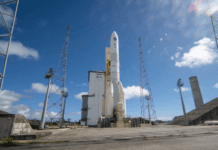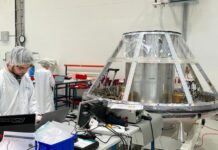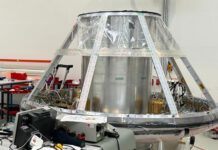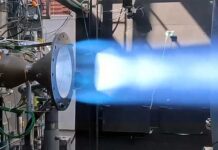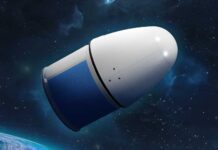
Space transportation startup The Exploration Company has continued testing its methane-powered Huracán engine, which will power the company’s Nyx Moon spacecraft.
The Exploration company is currently developing three different engines. Mistral for Nyx Earth, Huracán for Nyx Moon, and its high-thrust Typhoon engine, which currently doesn’t have a direct application but is being developed to power the first stage of the next generation of European launch vehicles. When the company’s full engine lineup is laid out like that, there is a clear pattern. They’re all wind-related, and the more powerful the wind-related weather phenomenon, the more powerful the engine.
In October 2023, The Exploration Company announced the completion of the second test campaign of the Huracán engine’s thrust chamber at the DLR facilities in Lampoldshausen, Germany. During the campaign, a total of eight tests were conducted with a total burn time of 560 seconds. While a 21 October update revealing the results of this test campaign didn’t name the engine specifically, a quoted response from CEO Hélène Huby explained that the engine being tested was indeed Huracán and that it would be utilized to power Nyx Moon.
The Exploration Company announced the completion of the latest phase of Huracán thrust chamber testing on 12 February. This phase of testing was notable as it was the first time that liquid methane replaced water as the engine’s coolant, getting it closer to the conditions under which it would operate during a flight. It was also the first time the main chamber valves underwent testing in cryogenic conditions and the first time the thrust chamber was tested with its thermal barrier coating.
According to the company, the cooling systems performed better than expected, which resulted in unexpected methane injection conditions and degraded combustion efficiency. In a subsequent phase of the test campaign, the company will work towards regaining its previously achieved efficiencies. During this phase of testing, the thrust chamber will also be pushed to explore its operational ranges.
While Huracán is being developed to power the company’s Nyx Moon spacecraft, the application of the engine may also extend further.
In October 2022, The Exploration Company received funding for the development of Huracán from the French government through its France 2030 initiative. In a short breakdown of the project, the engine is described as serving the needs of “the upper stages of small launchers and those of orbital vehicles.” It goes on to state that the engine will be “complementary to the more powerful Prometheus engine.” The breakdown also revealed that the company, at least back then, expected the engine to be available from 2025.


